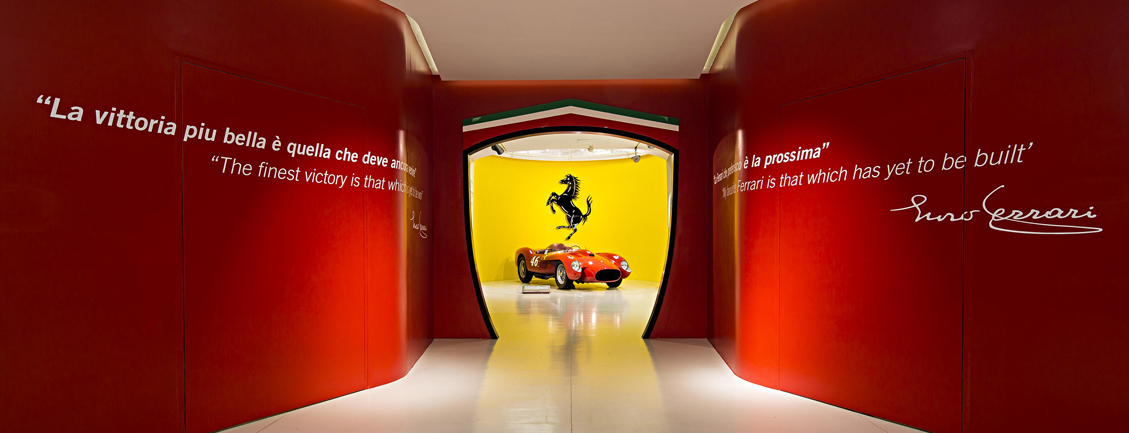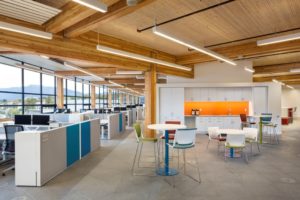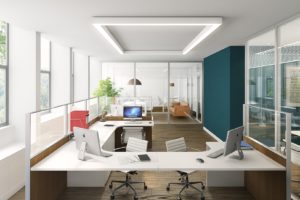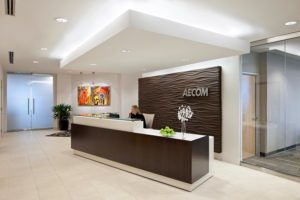Corporate Museum: An innovative medium to tell your brand’s story
Image Source: musei.ferrari.com
Corporate Museums are physical spaces or environments designed to communicate the story of an Organization; be it the history, its current standing or future vision.
Corporate museums could be setup with an aim to create awareness about the company in general. Or sometimes there may be more specific objectives like highlighting achievements, demonstrating market leadership, sharing deeper information behind the company’s social initiatives or creating an immersive display of the range of products manufactured by the company.
These museums can be set up both inside the company’s head office or factory or even at a third location. However, most companies often place it inside their corporate premises near the main entrance, office lobby or a dedicated zone near the reception area.
So, why must a company invest in Corporate Museum and what could they display there?
Investing in well planned corporate museum has several benefits for the Brand. A well designed zone creates an opportunity for the Brand to connect and engage with visitors and employees at a deeper level. The design of a corporate experience zone should be a blend of interaction, information and experiential elements to connect with the visitor at a deeper emotive level, leaving behind an everlasting impression.
The key approach to plan a corporate museum must be based on following stages:
· Define the story– The first step for the Brand is to clearly define who the target audience is and what should be the visitor’s mental takeaway from the experiential center.
· Weave the story through design – The designer is then entrusted to depict the story in an interesting and engaging manner. The design team has to develop a customized design language according to the audience and the story.
· Create an experience – At the museum, the design should engage the visitor at a deeper level. A successful 360 degree experience is achieved by involving as many of the senses (touch, feel, sight, sound & smell) as feasible. Such sensory rich experiences connect with the audience at a far deeper level than any other medium.
· Amaze them with facts and your expertise – By showing your audience how good you are in what you do, your brand can march miles ahead of its competition!
What to display?
· Organization’s value system, beliefs & vision
· Company history, photographs & milestones
· Achievements, awards & breakthroughs
· Expertise of products & Services
· Technological or manufacturing prowess
· CSR initiatives and impact
Some deeper objectives of Corporate Museums
· Claiming Heritage: Museums tend to give its visitors an opportunity to let them know how the company’s journey was started; where they come from and where do they draw inspiration from. Making the visitors understand the process behind the successful implementation of such a product and service always creates a two way communication between the company and the customers, but also creates a sense of establishment and pride among the employees. A very good example for the same is the Guinness Storehouse museum in Dublin, Ireland. Guinness has a very unique heritage theme incorporated in their museum, and this goes well with the image that they have in the market – classy.
· Leadership: When we talk about leadership, we can say that people look up to the industry leaders as they have been successful in implementing their vision. As companies create a unique innovative space for themselves to create a corporate museum, no matter if the company is small or big, there must be a dedicated well designed space to show how good they are at what they do and in what aspect they are better than their competitors. A museum inside the office is the perfect place to broadcast your leadership statistics to prospective clients. The same can be seen through Ferrari’s corporate museum in Maranello, Italy. Being one of the leaders, the brand has successfully showcased their leadership through a corporate museum.
· Innovations: Innovation is what drives the firm; the biggest challenge is how to showcase ideas and innovation. Every firm will have something to show and this is what should be projected using suitable design elements to make the theme look in-line with the company’s brand image. The Coca-Cola Museum in Atlanta, Georgia is a very good example of brand that deciphers innovation easily. One of the oldest in the industry, Coca-Cola has been reinventing and innovating all through.
· Trust in the brand: Corporate museum is a way to showcase the company’s talent and expertise in that specific domain, hereby stating that they are pioneers in what they do. Employees and customers also feel a sense of pride by being a part of the brand. The corporate museum must coincide with the feelings that audiences have for the brand.
Do’s and Don’ts of Corporate Museum:
· Do – Research: Before starting with designing, research what your customers already know about your brand. Prototype and implement the same in your museum design.
· Do/ Don’t – Technology: Do build visitor experience by analyzing both physical and digital communication. A good use of digital communication like Virtual Reality (VR) or Augmented Reality (AR) can often help create interesting experiences and deep impressions.
· Don’t – Overdo: The design and display must be relevant to your communication goals; there lies a fine line between communicating the intended message and adding too much.
Every business either small or large, must consider this unique concept of incorporating museums in their corporate office while designing or redesigning their office. This story-telling medium helps to build and strengthen existing brand image and facilitate fulfilment of its communication objectives. While we have discussed in the detail about why company needs a corporate museum, we must also understand the importance of having designing experts on the board to plan and implement the same.
Design Desk India specializes in Environment designs including designing of Experience Centers or Corporate Museums.
Find out more on www.designdesk.in/environment-design/ or Contact us today on reimagine@designdesk.in







